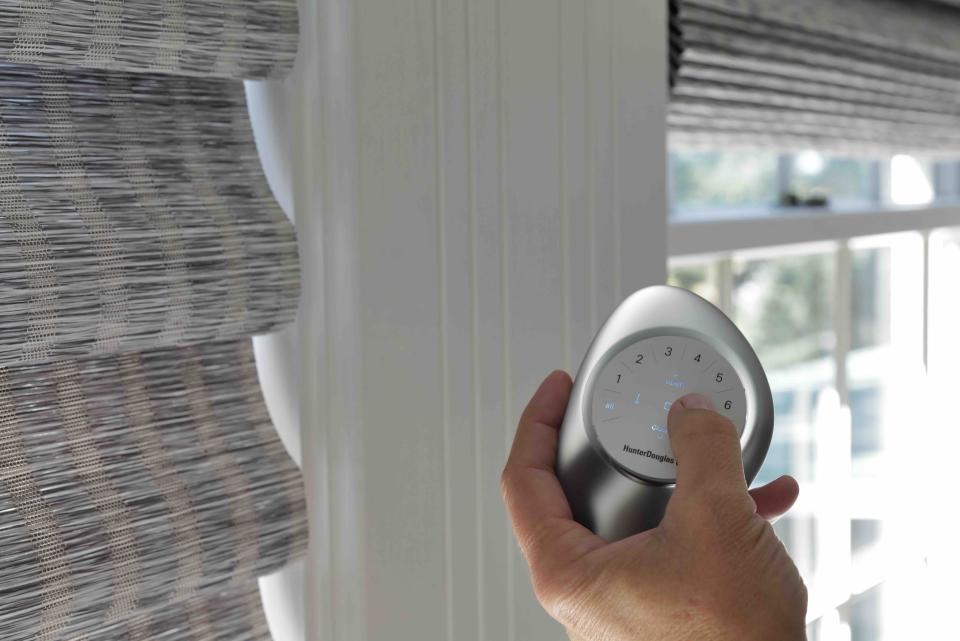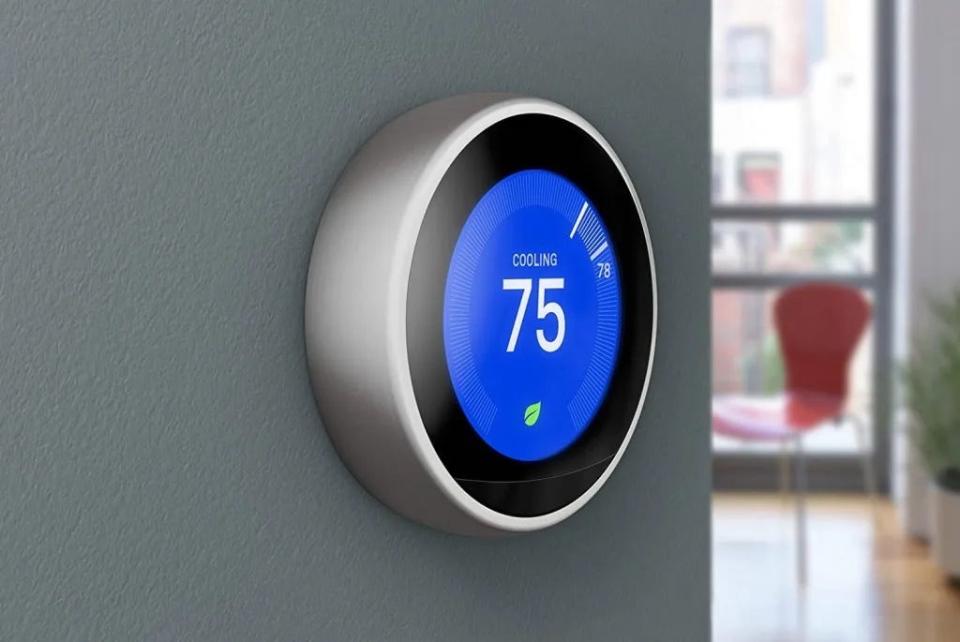These smart home products can make a big difference on your energy and insurance bills
I thought it was just us. Or rather, me. That giant energy bill that arrived at the end of last month? I thought it was all my fault because I’m such a fussy Goldilocks-type who wants everything “just right” in my house.
It’s true: I’m that person who goes room to room turning on – and up – every light possible nearly all hours of the day. “I just can’t see in dimly lit rooms,” I whine when my husband trails not too far behind switching them off. Then there’s all this weird weather.
It’s our first summer in a new home, in a new state, and it was crazy-cold – unseasonably so – according to every neighbor and store clerk within a 100-mile radius. Every time same-said hubby told me to stop cranking up the heat and to put a coat on instead, I grumped, “But it’s so cold I can see my breath.” When Mother Nature beat me to the punch a few weeks ago and twisted that dial up about 30 degrees overnight to “instant sweltering summer” levels, I blasted the air conditioning. We’ve never lived in a house with built-in air conditioning before. What a treat!
Am I the reason our energy bills have skyrocketed this year? Not exactly. Though I do need to be much more responsible about it overall, energy costs are increasing dramatically for nearly everyone. But so is the number of people – including my family – buying smart home gadgets.
According to a Safewise consumer survey, three out of four Americans purchased a smart home product in the past year. If you’re one of them, that device might help you curb your energy costs, starting today.
“Not all smart devices are designed to help you save on electricity or lower your bills, but the ones that are, do a good job of addressing common sources of wasted energy,” says Dylan Garrett, head of climate tech at Synapse and host of the "Hardware to Save a Planet" podcast.
Deciding where to start is always the biggest hurdle, and most people want to see the biggest energy and cost savings with as little effort as possible. We have plenty of advice on that, but the first bit of smart home tech I grabbed wasn’t something I bought to buffer my bank account. It just did that all on its own.
Short on cash? 7 things you can get for free, including movies, TV shows, books
Suffer from seasonal allergies? This tech could help you breathe a little easier
How smart video doorbells can save you money

Industry analysts at Parks Associates and Statista estimate people will buy about 5 million video doorbells in the USA this year, which is great for fending off potential porch pirates. But most people don’t know you might be able to lower insurance costs with them.
One of the first smart home gadgets I added to our new (yet quite old) house was the Wyze Video Doorbell Pro ($94). It acts as a virtual guard, receptionist and video recorder, watching out for cars that pull into our driveway and people who come to the door. It knocked about $20 off our homeowner’s insurance right out of the box.
How to scare off porch pirates: Ways to keep your packages safe
There are several options on the market, but this one is about as easy to DIY install as they come. It's battery-powered, offers 150-degree field of view with a 1:1 aspect ratio and has an option to use free cloud storage.
The best part? A simple starter security system can pay for itself in no time by saving up to 10% on your homeowner's or renter's insurance.

Keep money from flying out the window
The most dramatic money savers for our household have been smart window blinds.
Energy-efficient windows will always be an important part of your home, but you can stretch your dollars further by automating your shades or blinds. Did you know that up to half of your home’s energy could fly out your windows? Smart shades push window efficiency to the next level by working in sync with the sun to let the right amount of light (and heat) in or out when needed.
Amazon and One Medical: Can big tech make health care less painful?
For this, we splurged for the highest tech solution on the market – the just-released Smart Shades from Hunter Douglas with the latest PowerView automation. These let you press a single button, use a voice-enabled helper such as Alexa or use an app to set a schedule to keep your house cool when it’s hot outside – or warm when cooler weather rolls in. The price varies depending on the materials you choose and the specifics of your particular windows. We’ve lowered our energy bill by nearly 50% since putting these in.

Keep energy vampires away
Want to know another handy trick for finding out why your electric bill is so high? Tonight, turn all the lights, appliances and electronics “off” in your house, then walk around and notice how many tiny red, green and blue lights you see. Your big-screen TV, game consoles, streaming boxes and even your coffee machine slowly sip juice while you’re not looking (or using them!), and these energy vampires can account for up to 10% of your power bill.
Smart plugs are a simple way to solve this problem – and as a bonus, they’re cheap! I’ve used several from Belkin, Wyze, TP-Link and many others, and they’re all pretty great at what they do. Most sync with Alexa or Google Home, so you can set schedules and routines to shut off power when not in use, without unplugging. These run an average of $10 to $25, so stock up and watch your energy bill drop.
Let there be (smarter) lightbulbs
Smart bulbs are another easy way to embrace the smart home revolution without breaking the bank or busting holes in your walls. All smart bulbs use LED technology to produce their pleasant glow, and they use, at most, 25% of the energy that an incandescent bulb slurps up. On top of that, they’re typically dimmable with a few taps on your smartphone or wall hub, adding to their energy efficiency. You can set them up to trigger when there is motion in a room or when you open a smart-connected door lock. Depending on your other smart home gadgets, they can even automatically shut off when you leave a room.
Single bulbs, such as those from Wyze, can start at less than $15, but you can invest in a whole-house smart lighting makeover with a more extensive kit from the Philips Hue line or other comparable brands. Either way, you’ll save energy and money in the long run.

Let smart thermostats do what they do best
If you’re desperate to cut your energy bill, one of the easiest ways is with a smart thermostat. This futuristic little device on your wall can seriously cut costs and make your house greener in the process.
“Smart thermostats are huge energy savers since almost half of the average home’s energy use comes from heating and cooling,” Garrett says. “A Nest unit, for example, can save between 10% and 12% on heating and as much as 15% on cooling, which can have a meaningful impact on your overall energy footprint and, as a result, save you significant money at the end of every month.”
Jennifer Jolly is an Emmy Award-winning consumer tech columnist. Email her at jj@techish.com. Follow her on Twitter: @JenniferJolly. The views and opinions expressed in this column are the author’s and do not necessarily reflect those of USA TODAY.
This article originally appeared on USA TODAY: Which smart home products can actually cut your energy bill?
